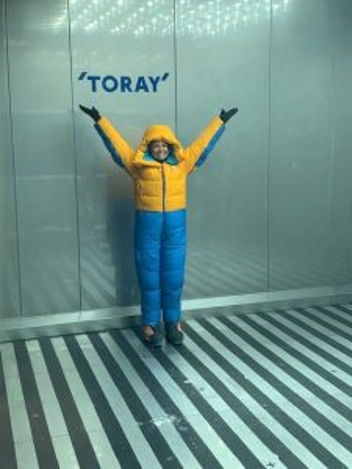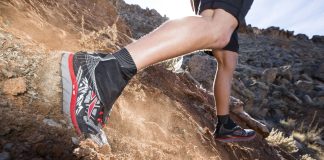Toray’s Fibers & Textiles Research Laboratories recently partnered with Marmot to test a new 8,000-meter suit, built for the altitudes and demanding conditions of the Himalayas. The Marmot and Toray teams, including Everest veteran Roxy Vogel, traveled to Seta, Japan, home of Toray’s Technorama GIII facility, an advanced laboratory for reproducing climates from around the world, to put the suit through its paces in two days of testing.
The recently opened Technorama GIII allows Toray research testers to reproduce weather conditions from a mountain summit to a stuffy, crowded subway car.
The latest iteration of their 8000-meter suit, which makes use of several custom-designed Toray textiles, employs Marmot’s new Warm Cube design, which houses the insulating material (in this case, 800-fill down) in cube-shaped compartments vs. the traditional baffle.
Due to the air space between the cubes, a garment with Warm Cube retains body heat more efficiently and warms up on the wearer much more quickly, said Marmot. It also cools more rapidly when the wearer opens the jacket to dump heat.
Marmot’s new 8000-meter suit reportedly performed as designed in the Technorama’s sub-zero temps and high wind conditions, enabling the teams to validate the efficacy of the Warm Cube design, through thermal imagery and the input of Roxy Vogel.
The three Technorama GIII testing chambers offer:
• Variable wind speeds up to 67mph
• Rainfall simulation up to 200 mm/hr
• Temperatures from -22 to 140 degrees Fahrenheit
• Humidity levels of 20 to 80%RH
• Solar Radiation levels to 1.16 kW/m²
• Motion simulation equipment (treadmills, bikes, ergometers, etc.)
• Infrared imaging systems
• Motion capture devices
• Physiological analysis equipment (myoelectric meters, sweat meters, clothing pressure gauges, etc.)
• Thermal mannequins
Marmot is one of many Toray manufacturing partners in the outdoor, sportswear and athleisure markets that regularly visits the Technorama GIII to test textiles and measure the results of their designs. The testing schedule this fall and early winter is booked solid, as brands put the final touches on their winter 20/21 products.








